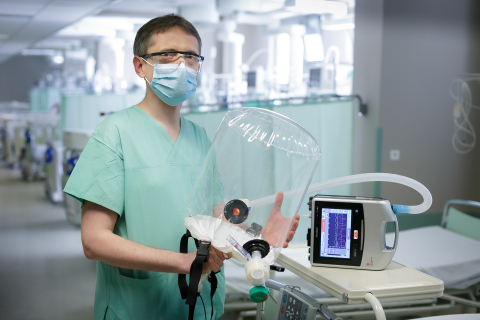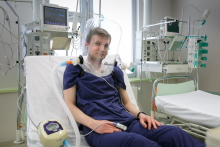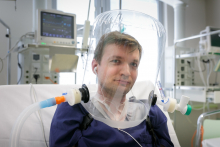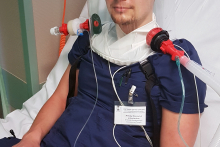Łukasz Wróblewski was inspired by the bubble-helmets shown in the media which were being used by Italian doctors. These noninvasive ventilation helmets proved to help COVID-19 patients breathe easier and protect doctors and caregivers on the coronavirus frontline. Studies have also shown that the bubble-helmet not only helps COVID-19 patients in respiratory failure but it can also be used to treat early stages of respiratory failure in general. In some cases, a noninvasive ventilation helmet can be used instead of mechanical ventilation. However, the noninvasive ventilation helmet is scarcely used in Poland, mainly due to the high price of disposable helmets and the difficulty to purchase them. Therefore, MUW anesthesiologist, Łukasz Wróblewski decided to develop such a noninvasive ventilation helmet for the Polish market.
Together with a team of engineers from the Warsaw University of Technology led by Przemysław Siemiński, Eng.D., from the Faculty of Automobiles and Working Machines, as well as a team of engineers from the Military University of Technology led by Major Paweł Płatek, Eng.D. from the Faculty of Mechatronics and Aviation, the design of the new noninvasive ventilation helmet was developed. 3D printing technology was used to produce the necessary fittings, valves and connectors and a Polish company is making prototypes for testing.
At the same time, Jarosław Seńka, Eng.D., from the Warsaw University of Technology, is working with his team on a mechanism to control oxygen flow, and Prof. Rafał Krenke’s team from the Department of Internal Medicine, Pulmonary Diseases and Allergy at MUW UCC hospital is testing the helmet in the treatment of sleep apnea.
During their research on subsequent prototypes, the scientists are focussing on controlling oxygen and carbon dioxide levels inside the helmet, and maintaining an acceptable level of noise generated by the incoming air as well as building an emergency access system to the patient's head. The level of the patient’s comfort and ability to communicate is very important too and is taken into consideration during testing.
The helmet has been tested so far on team members and student volunteers with success. Once the model is certified, it will be used on patients.
The team of scientists is applying for funds to cover the costs of making more prototypes and conducting further research. They also intend to promote this method of treatment among pulmonologists and doctors working in intensive care units.
The text is based on an article by Łukasz Wróblewski from the II Department of Anesthesiology and Intensive Care,
published in the issue 3-4 / 2020 of the MUW's magazine “Medycyna. Dydaktyka. Wychowanie.”
Phot: Department of Medical Photography MUW, Łukasz Wróblewski, MD



